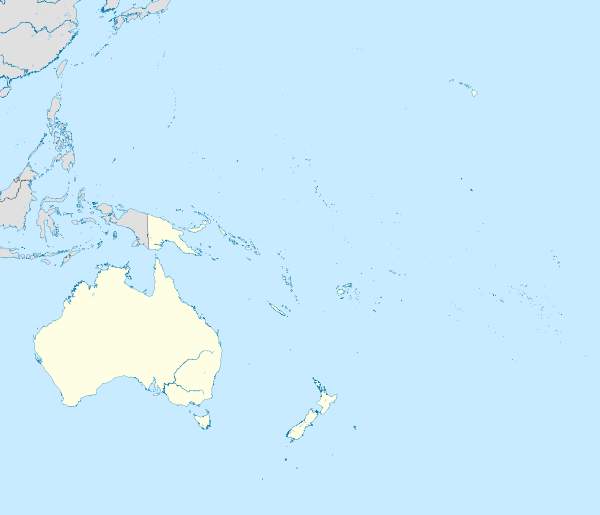Marae Moana
| Marae Moana | |
|---|---|
 | |
| Location | Cook Islands |
| Coordinates | 21°14′S 159°46′W / 21.233°S 159.767°WCoordinates: 21°14′S 159°46′W / 21.233°S 159.767°W |
| Area | 1,976,000 square kilometres (763,000 sq mi)[1] |
| Established | 2017 |
Marae Moana is an ocean sanctuary created on 13 July 2017, when the Parliament of the Cook Islands passed a bill creating the largest ocean sanctuary in the world at the time of its passage.[2] Marae Moana covers the Cook Islands' entire exclusive economic zone of over 1.9 million square kilometers.[3]
Kevin Iro, an environmentalist, first proposed the idea in 2012. Upon its passage, Iro said, "It's a historic time, particularly because everyone supported it, including our traditional leaders who spearheaded the whole thing." The bill had bipartisan support. The name of the marine park and its logo was created in 2014 by Bouchard Solomono, a student at Tereora College.[4] Some media speculated that this legislation was the most significant since the independence of the Cook Islands.[5]
Iro, who is a co-chair of the Marae Moana Establishment Trust, said this bill and marine park signifies “the sacredness of how Cook Islanders view our ocean space. It links us to our ancestors – it’s more than just the ocean.”
The legislation also creates multiple no-fishing zones within 50 nautical miles from each island.[5][6] Fishing and mineral exploration will still exist in the exclusive economic zone, but is to be done sustainably.
The Prime Minister, Henry Puna, said, “Socially, economically and spiritually we must all take care of it – and it is imperative that all those that live and exist both within and beyond its boundaries do recognise and respect its sanctuary,”.
“We do not only recognise that the ocean brings us revenue in terms of fishery and tourism and potentially sea bed minerals – it also provides us with clean air, clean water, and clean food to nourish and sustain us.”
“So this bill aims to sustain our livelihoods by protecting species and ecosystems as well as our cultural heritage that we inherit and pass on to future generations.”[5]
Iro was inspired to create this legislation from his experience with the islands and ocean and seeing environmental decay such as pollution and overfishing. "When I moved back here (from New Zealand) about 16 years ago I saw what was happening to the lagoons and reefs and really wanted to protect them for my kids," he said. "I want them to have the same experience I did as a boy growing up."[7][8]
Biodiversity
The park includes atolls, a volcanic island, upraised limestone islands, and a sand cay. It is home to 136 species of coral, over 600 species of fish, and 21 species of cetacea (whales and dolphins). It is also home to three threatened species of turtles, as well as some tuna species. Marae Moana is also home to five species of reef sharks and eleven pelagic shark species. Marae Moana is also home to many birds and plants as well.[9]
References
- ↑ "World Database on Protected Areas". Protected Planet. UNEP-WCMC. Retrieved 15 October 2017.
- ↑ "Cook Islands Marae Moana legislation passed". 13 July 2017.
- ↑ "Cook Islands creates huge Pacific Ocean marine reserve".
- ↑ Taylor, Chris. "Marae Moana becomes reality".
- 1 2 3 Association, Pacific Islands News. "Cook Islands marine sanctuary Marae Moana passed in Parliament".
- ↑ Admin. "Marine Park Map". maraemoana.gov.ck.
- ↑ "Ocean sanctuary triple the size of France created in Pacific". 14 July 2017.
- ↑ "Cook Islands creates huge Pacific Ocean reserve".
- ↑ Admin. "Biodiversity". maraemoana.gov.ck.